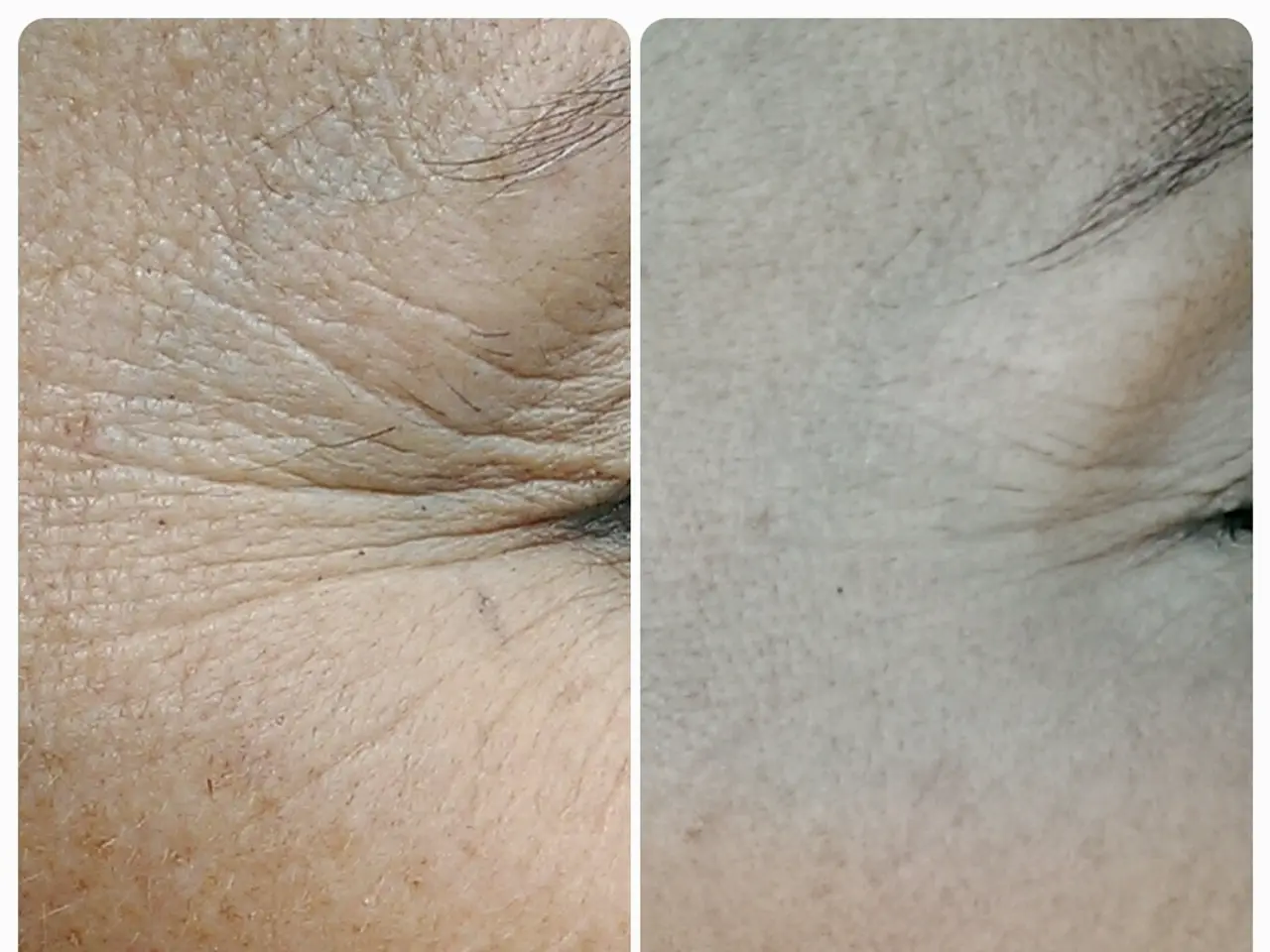Researchers Uncover Sensory-like Reactions in Your Skin's Structure
The human skin, our body's largest organ, is more than just a protective barrier. It functions as a hub of communication, influencing health beyond its surface, and can be considered a neuroimmunoendocrine organ.
The skin consists of three layers: the epidermis, dermis, and hypodermis. The epidermis, made up of keratinocytes cells, produces keratin to protect against damage. Beneath the epidermis lies the dermis, a layer rich in blood vessels, hair follicles, sweat glands, nerve endings, and specialized nerve structures like Meissner's corpuscles for light touch, Pacinian corpuscles for vibration, Merkel cells for pressure, and free nerve endings for pain and temperature. The deepest layer, the hypodermis, contains fat and connective tissue for insulation and energy storage.
UV radiation prompts the skin to produce vitamin D, which has immune-modulating effects. Additionally, the skin produces hormones like cortisol and endorphins, affecting both local and systemic responses. This hormonal interplay is part of the reason why stress can exacerbate conditions like eczema or psoriasis through the mind-skin connection.
Recent studies have also uncovered the skin's role in sensing smells, with olfactory receptors found in hair follicles. Moreover, the skin contains light receptors, which might explain why phototherapy helps conditions like psoriasis.
Intriguingly, the skin's sensory neurons adapt based on the skin they innervate. For instance, in mice, neurons in hairless skin develop into Meissner corpuscles, which are highly sensitive to light touch, while those in hairy skin form lanceolate complexes, which are less sensitive. Scientists have identified bone morphogenic proteins 5 and 7 (BMP5 and BMP7) as key signals in hairless skin, essential for forming Meissner corpuscles.
The understanding of how skin guides nerve development could aid in regenerating damaged nerves or treating congenital neuropathies. Furthermore, inhibiting the P2X4 receptor on sensory neurons could lead to new topical treatments for psoriasis and dermatitis.
Researchers, including those led by Dr. Takahiro Tsuji, have also developed sensors made from carbon nanotube-elastomer composites that mimic how human skin detects pressure for prosthetic limbs. These advancements highlight the potential for the skin's complexities to revolutionise medical technology.
As we continue to unravel the mysteries of the skin, it becomes increasingly clear that this seemingly simple organ is, in fact, a hidden brain, with capabilities we're only beginning to understand.
Read also:
- Understanding Hemorrhagic Gastroenteritis: Key Facts
- Stopping Osteoporosis Treatment: Timeline Considerations
- Tobacco industry's suggested changes on a legislative modification are disregarded by health journalists
- Expanded Community Health Involvement by CK Birla Hospitals, Jaipur, Maintained Through Consistent Outreach Programs Across Rajasthan







